In development
Program: Day 2
Registration starts
Institutionality (I)
- Level 8: Naciones room 1 and 2
- Save to Google Calendar
- Save to My Agenda
Opening Ceremony
In development
Energy Transition (E)
- Level 8: Naciones room 1 and 2
- Save to Google Calendar
- Save to My Agenda
Fostering strategic alliances for the energy transition: the mining and energy correlation
Technological advances in the energy sector have a huge impact on the mining sector, which is a major energy consumer. In some countries, like Peru, mining represents a significant component of GDP...
Speaker(s):
 Omar Chambergo
Omar Chambergo
 Tilsa Oré Mónago
Tilsa Oré Mónago
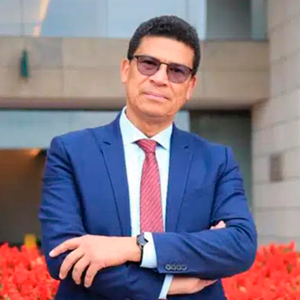 Luis Moreno
Luis Moreno
Break
Competitiveness (C)
- Level 8: Naciones room 3
- Save to Google Calendar
- Save to My Agenda
Energy markets perspectives in a post-pandemic world
In times of depleting fossil fuel-based sources of energy, the competitiveness of new sources of energy becomes crucial...
Speaker(s):
 Anna K. Fung
Anna K. Fung
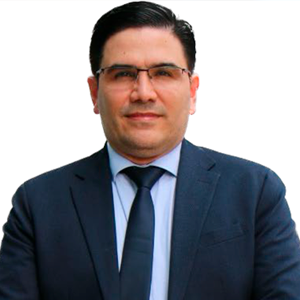 Fernando Alfredo Moscoso Lira
Fernando Alfredo Moscoso Lira
 Carlos Pascual
Carlos Pascual
 Elzbieta Rabalska
Elzbieta Rabalska
Institutionality (I)
- Level 6: Mangomarca room
- Save to Google Calendar
- Save to My Agenda
Powering the UN 2030 Agenda
Policy coordination is key to addressing the challenges of the energy sector. The 2030 Agenda for Sustainable Development, COP26, and The European Green Deal...
Speaker(s):
 Simon Turmel
Simon Turmel
 Ana Isabel Moreno
Ana Isabel Moreno
 Andrew Flagg
Andrew Flagg
 Erin Hammel
Erin Hammel
Energy Transition (E)
- Level 6 : Pachacamac room
- Save to Google Calendar
- Save to My Agenda
Innovation and Disruptive Technologies - The Regulator’s role and the dilemmas we face
The energy outlook is more complex than ever. Innovations and advancing technology represent some of the factors driving the energy transition and creating new standards...
Speaker(s):
 Yolanda Domingo
Yolanda Domingo
 Paulo Oliveira
Paulo Oliveira
 Tatsuya Shinkawa
Tatsuya Shinkawa
 Katherine L. Peretick
Katherine L. Peretick
Institutionality (I)
- Level 4: Manchay room
- Save to Google Calendar
- Save to My Agenda
Lunch Time
Institutionality (I)
- Level 8: Naciones room 3
- Save to Google Calendar
- Save to My Agenda
Being an independent regulator
The energy transition requires a stable regulatory environment that promotes innovation and investments...
Speaker(s):
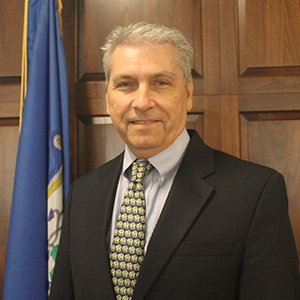 Michael Caron
Michael Caron
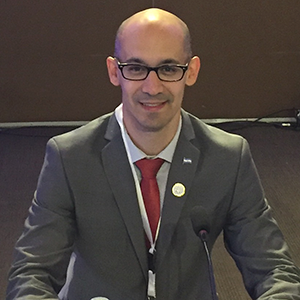 Luciano Paulin
Luciano Paulin
 Annegret Groebel
Annegret Groebel
 Agnes Maria de Aragão da Costa
Agnes Maria de Aragão da Costa
Competitiveness (C)
- Level 6 : Pachacamac room
- Save to Google Calendar
- Save to My Agenda
Developing the game rules for cross-border integration
Improving the level of interconnections between countries and enabling them to move towards greater integration is an important milestone for energy transition.
Speaker(s):
 Alison Archer
Alison Archer
 Alda Ozola
Alda Ozola
 Rodrigo Rodriguez
Rodrigo Rodriguez
 José Fernando Prada
José Fernando Prada
Universal Energy Access (U)
- Level 6: Mangomarca room
- Save to Google Calendar
- Save to My Agenda
Secure and sustainable - opposites or mutually reinforcing goals?
The energy transition is an absolute necessity, but we often forget it or keep it on the back burner when discussing security of supply (SoS) and, in particular, the fear of supply disruption...
Speaker(s):
 Pedro Verdelho
Pedro Verdelho
 Anna Collyer
Anna Collyer
 Dan Scripps
Dan Scripps
 S’khumbuzo S. Tsabedze
S’khumbuzo S. Tsabedze
Break
Universal Energy Access (U)
- Level 8: Naciones room 1 and 2
- Save to Google Calendar
- Save to My Agenda
Micro-grids "Islands of power", energy planning and other energy access solutions
Universal energy access by 2030 is one of the United Nation's sustainable development goals...
Speaker(s):
 Agnes Maria de Aragão da Costa
Agnes Maria de Aragão da Costa
 Dan Scripps
Dan Scripps
Opening Ceremony
Institutionality (I)
- Level 8: Naciones room 1 and 2
- Save to Google Calendar
- Save to My Agenda
Fostering strategic alliances for the energy transition: the mining and energy correlation
Energy Transition (E)
- Level 8: Naciones room 1 and 2
- Save to Google Calendar
- Save to My Agenda
DESCRIPTION:
Technological advances in the energy sector have a huge impact on the mining sector, which is a major energy consumer. In some countries, like Peru, mining represents a significant component of GDP. Considering that the incorporation of more clean energy sources in mining processes can help to decarbonize the economy and, in turn, the use of minerals, such as copper and lithium, can boost the development of storage and electromobility technologies, how can we turn the mining sector into an ally for the energy transition?
KEY QUESTIONS:
1) Why should we see renewable energy and mining as complementary markets?
2) How has the increase in non-conventional renewable energy impacted the costs of mining processes?
3) How can electricity demand from mining be managed efficiently?
4) Is there a single energy transition model in the sector or how have countries adapted to the gradual change considering their energy matrix?
5) What other emerging technologies exist, for example, to monitor energy consumption in the sector?
 Omar Chambergo
Omar Chambergo
 Tilsa Oré Mónago
Tilsa Oré Mónago
 Luis Moreno
Luis Moreno
 Lily Irma Ruiz Celi
Lily Irma Ruiz Celi
Energy markets perspectives in a post-pandemic world
Competitiveness (C)
- Level 8: Naciones room 3
- Save to Google Calendar
- Save to My Agenda
DESCRIPTION:
In times of depleting fossil fuel-based sources of energy, the competitiveness of new sources of energy becomes crucial. To identify other energy sources and methods by which electricity can become more competitive and accessible to consumers, it is important to analyze the global energy market conditions and trends to see how sustainable policies and economic power can help us to reach more consumers worldwide.
Hence, there is a need to understand energy markets comprehensively. Furthermore, we need to address risk management and regulations for new regulatory interventions in a post-pandemic world considering different geopolitical scenarios. Moreover, we need to address the impact of energy reforms, cutting-edge technology, and climate ambitions.
KEY QUESTIONS:
1) In which direction is the energy sector moving?
2) Has the quest to tap the cheapest source of energy changed power generation trends?
3) How have the pandemic and the geopolitical scenario impacted the perspectives of energy markets? What is the impact in your region?
4) How are regulators addressing climate risk management and greenhouse gas emission reduction (Net Zero)?
5) What is the future of energy demand? How are governments and consumers changing their energy consumption?
 Anna K. Fung
Anna K. Fung
 Fernando Alfredo Moscoso Lira
Fernando Alfredo Moscoso Lira
 Carlos Pascual
Carlos Pascual
 Elzbieta Rabalska
Elzbieta Rabalska
 Hasan Özkoç
Hasan Özkoç
Powering the UN 2030 Agenda
Institutionality (I)
- Level 6: Mangomarca room
- Save to Google Calendar
- Save to My Agenda
DESCRIPTION:
Policy coordination is key to addressing the challenges of the energy sector. The 2030 Agenda for Sustainable Development, COP26, and The European Green Deal are just some examples of international coordination mechanisms in an increasingly interconnected world.
ICER's aim is to raise public and policy-maker awareness and improve their understanding of energy regulation and its role in addressing a broad spectrum of socio-economic, environmental, and market issues. But in what ways is international cooperation helping us to develop regulatory intelligence?
KEY QUESTIONS:
1) How are regulators addressing through international cooperation local and global challenges? (Case studies)
2) What is the role of International Technical Cooperation in accomplishing this? Experiences of agents, such as USAID, GIZ, KOICA, APCI, etc
 Simon Turmel
Simon Turmel
 Ana Isabel Moreno
Ana Isabel Moreno
 Andrew Flagg
Andrew Flagg
 Erin Hammel
Erin Hammel
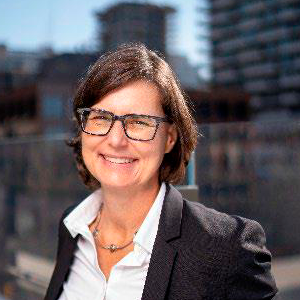 Carolyn Calwell
Carolyn Calwell
Innovation and Disruptive Technologies - The Regulator’s role and the dilemmas we face
Energy Transition (E)
- Level 6 : Pachacamac room
- Save to Google Calendar
- Save to My Agenda
DESCRIPTION:
The energy outlook is more complex than ever. Innovations and advancing technology represent some of the factors driving the energy transition and creating new standards. What are these new technologies? What role, if any, should utilities play in their development? And how should long-term technology plans be approached?
KEY QUESTIONS:
1) What assumptions are being made about the future of the energy sector? Which assumptions are already being challenged?
2) How can utilities and regulators move forward if the industry looks completely different in the future? Will they be ready to compete with these new dynamics and new players?
3) How can regulators and utilities proactively monitor these potential shifts within the fundamental nature of their business model?
 Yolanda Domingo
Yolanda Domingo
 Paulo Oliveira
Paulo Oliveira
 Tatsuya Shinkawa
Tatsuya Shinkawa
 Katherine L. Peretick
Katherine L. Peretick
 Claudio Martins de Souza
Claudio Martins de Souza
 Yolanda Domingo
Yolanda Domingo
ERRA - Emerging Markets Association meeting (invitation only)
Institutionality (I)
- Level 4: Manchay room
- Save to Google Calendar
- Save to My Agenda
In development
Being an independent regulator
Institutionality (I)
- Level 8: Naciones room 3
- Save to Google Calendar
- Save to My Agenda
DESCRIPTION:
The energy transition requires a stable regulatory environment that promotes innovation and investments. The role of energy regulators in retail market monitoring is more important than ever, and the need to strike a balance between investors, state intervention and consumer protection is on the rise. Ensuring good regulatory practices is an important task and should be maintained by a comprehensive strategy. Some elements consist of avoiding external influences from stakeholders. This could be achieved by the regulator’s independence, which should be covered by protecting it from the influence of national and regional governments and industries. In addition, the legislative framework is essential to set the environment in which the regulator is supposed to work. A regulator's duties and powers should help to identify a minimum set of competences defining its specific responsibilities to promote competition and consumer empowerment.
Effective organization of the regulator requires clear decision-making process and actions and an internal operational structure with distinct roles and responsibilities. The regulator should be able to enforce the regulations it passes since enforcement involves ensuring compliance with the rules by market participants and regulators. Lastly, transparency and accountability are cornerstones in the work of the regulators and should be maintained at all times.
KEY QUESTIONS:
1) How can countries enhance the independence of their regulators?
2) And what additional benefits would these actions guarantee if they are implemented properly?
 Michael Caron
Michael Caron
 Luciano Paulin
Luciano Paulin
 Annegret Groebel
Annegret Groebel
 Agnes Maria de Aragão da Costa
Agnes Maria de Aragão da Costa
 Natasha Avendaño García
Natasha Avendaño García
 Tony Gebrayel
Tony Gebrayel
Developing the game rules for cross-border integration
Competitiveness (C)
- Level 6 : Pachacamac room
- Save to Google Calendar
- Save to My Agenda
DESCRIPTION:
Improving the level of interconnections between countries and enabling them to move towards greater integration is an important milestone for energy transition. This objective resulted in the development of regional energy markets as one of the top energy priorities. In this regard, there are two strategic directions to improve cross-border integration: in the short term, the focus is on regulatory convergence, while the long-term focus is on investment and interconnection development.
Interconnection development is a multiple-year process that starts with the identification of a need. This need can be a result of a new energy generation, problems of congestion, demand growth, or significant changes in the topological grids.
Going ahead with further cross-border integration requires a high level of coordination among different parties, namely TSOs, regulators, and administrations. The development of cross-border interconnections and the integration of regional markets is a long process that requires stability in terms of its regulatory framework and a well-designed long-term actions plan.
KEY QUESTIONS:
1) How can countries converge their regulations to achieve regional integration?
2) How should these interconnections be developed? What is the role of energy planning in your region?
3) And what can we do to deepen the regional dialogue between regulators, institutions, and network operators?
 Alison Archer
Alison Archer
 Alda Ozola
Alda Ozola
 Rodrigo Rodriguez
Rodrigo Rodriguez
 José Fernando Prada
José Fernando Prada
 Tony Gebrayel
Tony Gebrayel
Secure and sustainable - opposites or mutually reinforcing goals?
Universal Energy Access (U)
- Level 6: Mangomarca room
- Save to Google Calendar
- Save to My Agenda
DESCRIPTION:
The energy transition is an absolute necessity, but we often forget it or keep it on the back burner when discussing security of supply (SoS) and, in particular, the fear of supply disruption. On the road to net zero and in a net-zero energy system, security of supply will remain as crucial as today - if not more - although it will likely show up in different ways and use other tools. While it is challenging to rethink SoS in this new framework, the opportunities for the energy transition are just as numerous. Regulators should contribute to the development of an energy system that ensures SoS as an outcome of the system rather than viewing it as a separate service requiring extra remuneration.
KEY QUESTIONS:
1) What knee-jerk reactions should be avoided in a supply crisis (because they are counter-productive in the medium to long term), and which tools are there that reinforce both SoS and the energy transition?
2) How can the energy systems of the present and the future marry SoS and the energy transition?
3) How can energy regulation harness the potential of energy efficiency towards SoS?
4) What role do prosumers and micro-generation play?
5) What market model could give the right signals for net-zero SoS in the long term (investments) and the short term (supply)? How to avoid that our energy systems are slowly overwhelmed by subsidies and support payments?
 Pedro Verdelho
Pedro Verdelho
 Anna Collyer
Anna Collyer
 Dan Scripps
Dan Scripps
 S’khumbuzo S. Tsabedze
S’khumbuzo S. Tsabedze
 Susana Cazorla
Susana Cazorla
Micro-grids "Islands of power", energy planning and other energy access solutions
Universal Energy Access (U)
- Level 8: Naciones room 1 and 2
- Save to Google Calendar
- Save to My Agenda
DESCRIPTION:
Universal energy access by 2030 is one of the United Nation's sustainable development goals.
According to the World Bank, "globally, the number of people without access to electricity declined from 1.2 billion in 2010 to 759 million in 2019, with decentralized electrification solutions gaining relevance through the use of renewable energy."
Increasing attention is being paid to micro-grids as they can be connected to a central grid and use its services. Furthermore, microgrids are seen as a way to help rural communities and developing countries to provide energy access solutions. Moreover, they are more resilient systems as they can be island off from the central grid and be deployed at a several different scales (e.g., from a single building to an entire municipality).
KEY QUESTIONS:
1) What role will microgrids play in achieving universal energy access?
2) Aside from microgrids, what other viable solutions should be considered to achieve greater access?
3) How close are we to achieving the goal of ennergy access by 2030? And how has the pandemic affected this goal?
4) How will renewables help to accelerate progress towards greater access? What types of regulatory reforms are needed?
5) In what ways should regulators be pushing utilities? How can we [regulators] encourage market-driven reforms?
 Agnes Maria de Aragão da Costa
Agnes Maria de Aragão da Costa
 Dan Scripps
Dan Scripps
 Lorraine Akiba
Lorraine Akiba
 Erin Hammel
Erin Hammel
